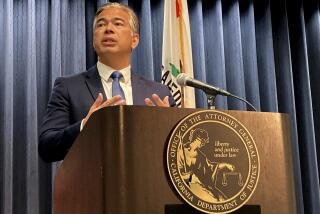Milwaukee-area salon reopens after fatal rampage
- Share via
If closure after a mass tragedy is possible, the survivors of two Milwaukee-area shootings have inched toward something like it over the last two weeks, with the end of an investigation and the opening of a business.
A refurbished Azana Salon and Spa reopened in Brookfield, Wis., on Saturday, six weeks after Radcliffe Haughton, 45, walked in on Oct. 21 with a gun in search of his wife, who worked there. Zina Haughton had just obtained a restraining order against him, saying he had threatened to kill her.
Haughton shot and killed his wife and two other women before killing himself. He wounded four others and set a small fire, triggering the building’s sprinklers.
Following the Sikh temple shooting in August, the spa rampage became the second Sunday morning mass shooting to strike the normally tranquil Milwaukee area. Sikh community members showed up at the spa to offer their support.
At the spa, the dead -- Zina Haughton, Maelyn Lind and Cary Robuck -- are memorialized with a plaque. Zina Haughton’s workspace has been replaced by a table with a vase bearing three yellow roses.
At the Sikh gurdwara, or temple, in nearby Oak Creek, where white supremacist Wade Page killed six people before killing himself, the FBI closed its investigation Nov. 20.
Page’s motives remain a mystery, the FBI said, even though it had initially classified the attack as an act of terrorism. After 200 leads, 300 interviews and more than 200 pieces of evidence -- none of which were released -- the FBI would say only that he had acted alone. The agency did not respond to a request for comment Sunday.
Without a trial, the victims and the public were left with an impressionistic portrait of a white supremacist who left no manifesto and had no drugs in his system when he attacked. A recently released examination of Page’s life by the Southern Poverty Law Center documented his involvement with the supremacist movement but trailed off into haziness on Page’s final weeks, except to mention that he had recently broken up with his girlfriend and fallen behind on his rent.
“It’s probably no coincidence that the temple is just down the block from the restaurant where [Page’s girlfriend] worked,” the report said. “Perhaps the turban-wearing Sikh men caught his eye because of the proximity.”
Page’s attack conforms to a longstanding pattern of lone-wolf supremacists whose full intentions have never been known, which analysts said was not just a criminal phenomenon but an idea embedded in some white supremacist thought.
“The whole idea of white warriors. It’s an integral part of the neo-Nazi and white supremacist subculture,” Brian Levin, director of the Center for the Study of Hate and Extremism at Cal State San Bernardino, previously told the Los Angeles Times. “They’ve always talked about the notion of the ‘propaganda of the deed,’ where you go out and you commit a terrible atrocity against a defined enemy in a manner that glorifies the movement without in any way giving away what your motive is. And in that sense, it’s interesting that Page killed himself.”
After the FBI’s announcement that Page had acted alone, Amardeep Kaleka, whose father died trying to stop Page, told the Milwaukee Journal Sentinel that the community was satisfied by the investigation.
“Our chief focus now is that we are interested in what we can do as a nation to stop this from ever happening again,” he said.
More to Read
Sign up for Essential California
The most important California stories and recommendations in your inbox every morning.
You may occasionally receive promotional content from the Los Angeles Times.











